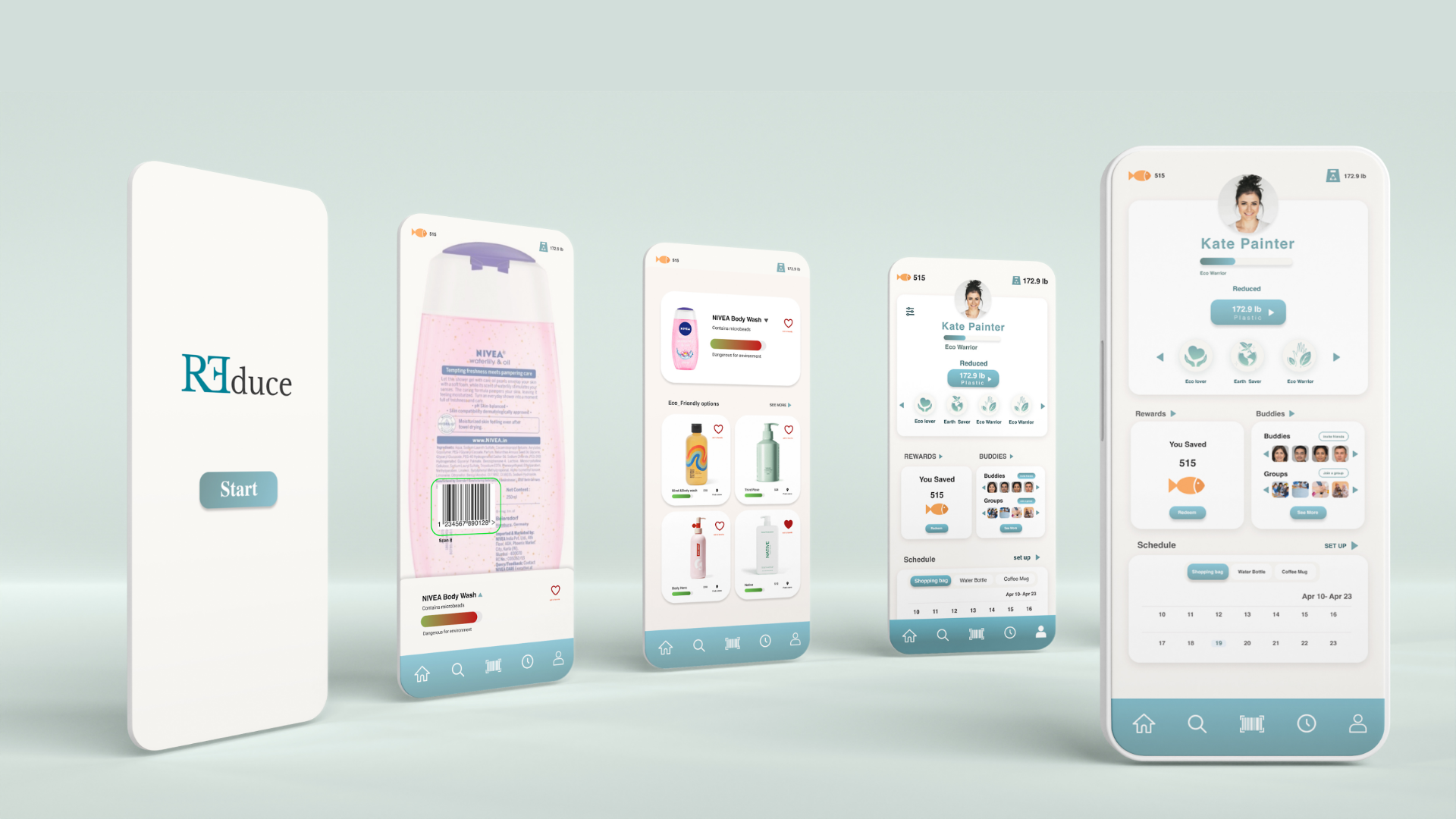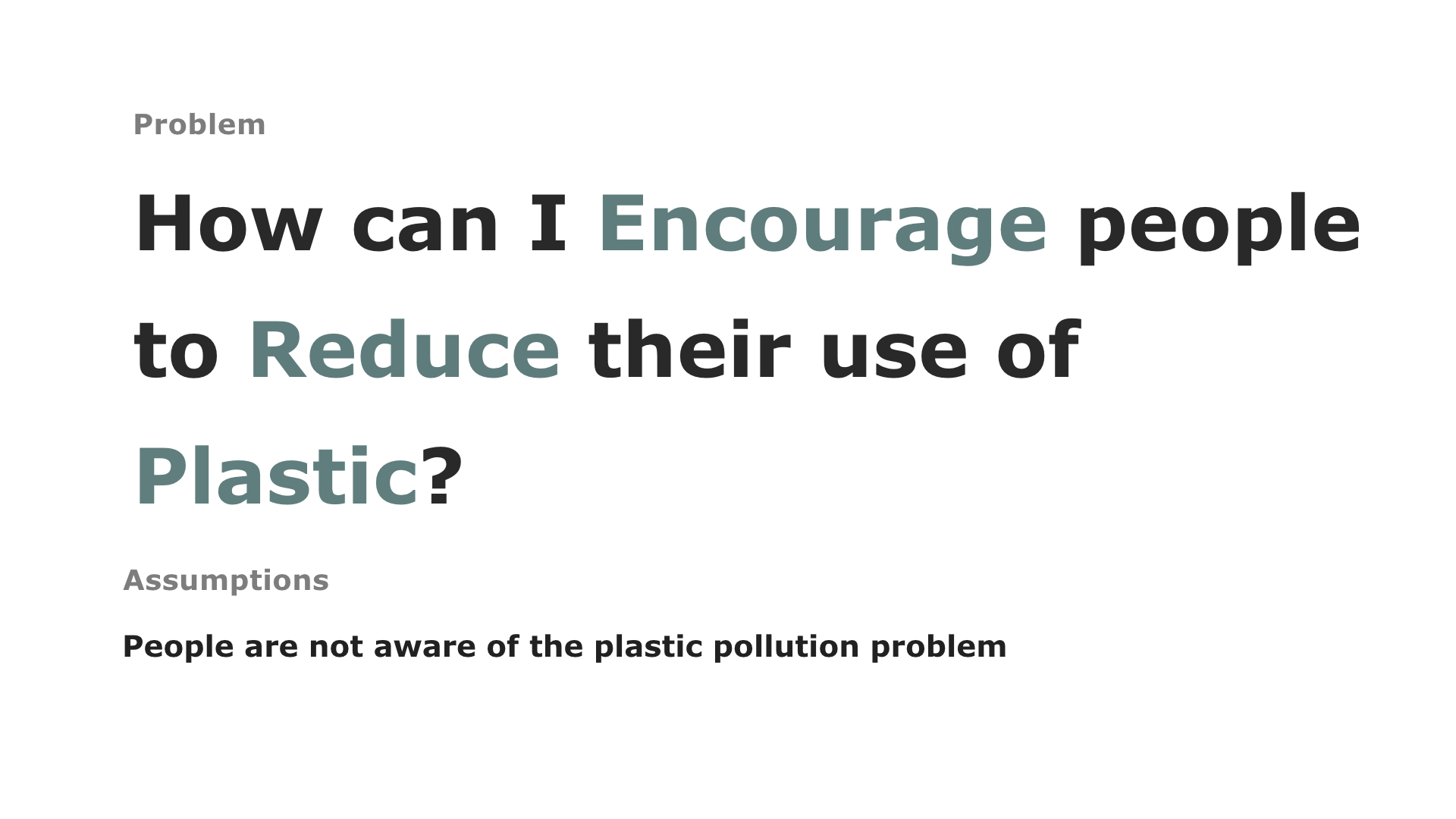
Reduce
Reduce is an application to help people reduce their use of plastic. Reduce aims to provide a platform to empower people who want to change their behavior toward using plastic. It helps people feel capable of changing and see that changing the behavior will impact the problem. Reduce is a solution for people who are aware of the problem and they may want some assistance to move from intention to action.

The world now produces more than 380 million tonnes of plastic every year, which could end up as pollutants, entering our natural environment and oceans. By 2050 There will be more plastic than fish in the world's oceans. Plastic enters the food chain. Recent research says that humans consume about five grams of small plastic particles every week, which is about the weight of a credit card.
Why is it important to solve this problem?
User Research
To validate the problem area I was trying to solve, I conducted six interviews and received 55 responses to my survey. The survey results surprised me. Initially, I assumed I would hear responses and concerns about the lack of awareness about the negative impact of using plastic specifically single-use plastic. But based on the data 96% of people are aware of the negative impact of plastic on our environment, and only 4% of people are not aware of the problem. And still, there are very few people who take any action.
To understand the level of their knowledge about plastic pollution I gave them a list of items that all contain plastic and asked them which one contains plastic. No one gave the right answer.
I was curious while people are aware of the negative impact of plastic why they wouldn’t stop using plastic. To understand the reason I interviewed people. During the user interview, I asked them about their shopping habits, intentions, and behaviors. After completing user interviews and affinity mapping the responses, I learned that the problem for my users is more behavioral.
I created a persona and user journey map. It helps me keep track of user features and visualize user needs & wants to locate specific user pain points and goals.)
So far I have learned that users are aware of the negative impact of plastic however they don’t have the knowledge about it.
Ideation
Moving forward in my ideation phase I came across the term “Theory of Planned Behavior”
The theory of planned behavior (TPB) is a psychological theory that links beliefs to behavior. The theory maintains that three core components, namely, attitude, subjective norms, and perceived behavioral control, together shape an individual's behavioral intentions.
Knowledge has a significate effect on attitude. Attitude shapes intention and intention is known as the motivational factor that affects one's willingness to execute an action.
Knowledge is gradually deceased in attitude and behavior on the practical level. There is a gap between knowledge and behavioral situation for implication. One of the reasons behind this is that knowledge acquired is often forgotten shortly after it is acquired. To reduce the gap between knowledge and behavior, we need to Turn Knowledge into Action,” we need to facilitate the situation for people.
Solution
More accurate, concrete, situational-based knowledge will be more appropriate to apply at the practical level.
I designed an application that not only provides accurate information but also facilitates the situation for them by reminding them to bring their reusable shopping bag, water bottle, and coffee mug. Users can also get information about every product by easily scanning the barcode. The app then tells them whether an item contains microplastic or not and whether the package is recyclable or not. It also suggests clean actions to the user. User can see their impact and receive rewards.










